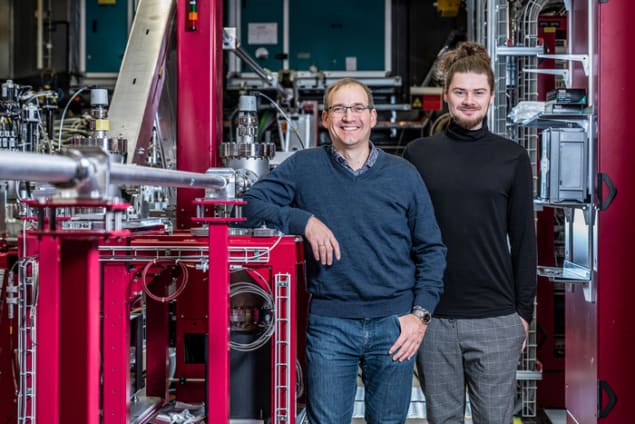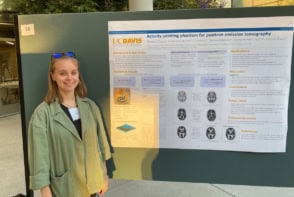
Thanks to measurements at the Swiss X-ray free-electron laser (SwissFEL) and the Swiss Light Source (SLS), researchers at the Paul Scherrer Institute (PSI) have succeeded in producing the first videos showing how a photopharmacological drug binds to and releases from its protein target. These films could help advance our understanding of ligand–protein binding, knowledge that will be important for designing more efficient therapeutics.
Photopharmacology is a new field of medicine that involves the use of light-sensitive drugs to treat diseases such as cancer. The drug molecules contain molecular “photoswitches” that are activated by light pulses once they have reached the target region in the body – a tumour, for example. The drug is then deactivated using another pulse of light. The technique could help limit the potential side effects of conventional drugs and could also help mitigate the development of drug resistance.
In the new work, researchers led by Maximilian Wranik and Jörg Standfuss studied combretastatin A-4 (CA4), a molecule that shows much promise as an anti-cancer treatment. CA4 binds to the protein tubulin – a crucial protein in the body that’s important for cell division – and slows down the growth of tumours.
The team used a CA4 molecule made photosensitive by the addition of an azobenzene bridge consisting of two nitrogen atoms. “In its bent form, this molecule binds perfectly to the ligand binding pocket in tubulin, but it elongates upon light illumination driving it away from its target,” explains Standfuss.
Tubulin adapts to the changing shape of the CA4 molecule
To better understand this process, which takes place on millisecond time scales and at the atomic level, Wranik and Standfuss used a technique called time-resolved serial crystallography at the SLS synchrotron and SwissFEL.
The researchers observed how the CA4 was released from tubulin and the subsequent conformational changes that occurred in the protein. They obtained nine snapshots 1 ns to 100 ms after the CA4 had been deactivated. They then combined these snapshots to produce a video that revealed that a cis-to-trans isomerization of the azobenzene bond changes CA4’s affinity for tubulin so that it unbinds from the protein. The tubulin in turn adapts itself to the change in CA4’s affinity by “collapsing” its binding pocket just before ligand release, before re-forming again.
“Ligand binding and unbinding is a fundamental process critical for most proteins in our body,” says Standfuss. “We have been able to directly observe the process in a cancer drug target. Besides the fundamental insight, we hope that better resolving the dynamic interplay between proteins and their ligands will provide us with a new temporal dimension to improve structure-based drug design.”

Photoswitches selectively activate individual neurons
In the current study, detailed in Nature Communications, the PSI researchers focused on the reaction occurring on the nanosecond to millisecond time scales. However, they also collected data covering the photochemical part of the reaction from femtoseconds to picoseconds. They are now completing the analysis of these results and hope to publish a new paper on this work soon.
“Ultimately, we want to produce a molecular movie covering the complete reaction of how a photopharmacological drug changes its shape over 15 orders of magnitude in time,” Standfuss tells Physics World. “Such a stretch of time would allow us to obtain the longest dynamic structural data for any drug–protein interaction to date.”



